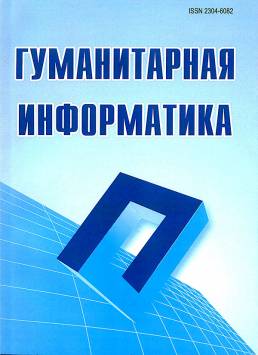VIRTUAL REALITY IN EDUCATION: THE DOUBTS AND HOPES
During the last 5 years, technology of virtual reality (VR) evolved from doubtful looking to widely used and implemented. And there was a priori to accept the fact their usefulness. Perhaps for this reason, there were born a lot of misconceptions about VR in general and, in particular, in the field of education. The general misconceptions include the following:1. «VR was created for entertainment only». This is not true. At the moment, VRhas covered many areas: marketing, tourism, real estate, art, education.2. «VR has a motion sickness problem». This defect was a problem for the first models of helmets. Modern models have no such problem.3. «VR-helmets cause great harm to human vision». VR-helmets use monitors those don’t radiate any particles (except photons of light), so they don’t cause harm.4. «VR leads users away from the present reality, causing disorder and creating dependency». Scientific evidence shows that VR, opposed to the altered states of109С.С. Елесин, А.В. Фещенкоconsciousness (caused by hypnosis, chemical drugs, etc.), does not cause the inadequacy of mind, does not reduce the degree of reflection, not characterized by a feeling of ambivalence, alienation of the own «I», etc.5. «VR kills the live relations and separates people from each other». But the same was talked about mobile phones, SMS-messages, social networks. However, those who consider the use of new technologies escape from reality, forget about their benefits: mobile telephony gives opportunity to connect with the person on the other side of the planet, and social networks allow to enrich remote communication by various types of content and activities.Also of note is the fear that is characteristic only for VR in the field of education. Modern e-learning technology has many advantages, but they gradually reduce theshare of the direct dialogue between teacher and student. Teacher replaced by interactive content, and the student instead of the person interacts with its simplified virtual model. The introduction of e-learning technologies must not become an end in itself. It requires careful and balanced approach when implementing all new in education.Based on the experience of implemented development VR content in education can be noted that the technology brings positive results when it is using by short sessions or as simulators and trainers. It is inappropriate to use VR for lectures and seminars. In thedevelopment of software solutions should focus on the newest models of VR equipment, the most eco-friendly and ergonomic for user. Hardware and software interface must be as simple as possible for users, especially for teachers. Also there must be the integration of applications VR with most common LMS (Moodle, BlackBoard, Edx, HyperMethod) in authorization part and transfer of user activity data from VR to LMS.
Keywords
виртуальная реальность, дополненная реальность, образо-вание, симуляторы, virtual reality, augmented reality, education, simulatorsAuthors
| Name | Organization | |
| Elesin S.S. | National Research Tomsk State University | |
| Feshchenko A.V. | National Research Tomsk State University |
References
